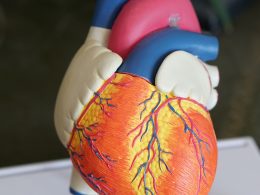Introduction: While we often associate air pollution with outdoor environments, there is a hidden danger lurking inside our homes: household air pollution. Invisible to the naked eye, this silent killer poses significant health risks to millions of people worldwide. In this article, we will delve into the issue of household air pollution, understand its causes and effects, and explore strategies to combat this hazardous problem.
- Sources of Household Air Pollution: a. Combustion: The use of solid fuels like wood, coal, or biomass for cooking and heating purposes releases harmful pollutants such as carbon monoxide (CO), nitrogen dioxide (NO2), particulate matter (PM), and volatile organic compounds (VOCs). b. Tobacco Smoke: Smoking indoors exposes both smokers and non-smokers to a dangerous mix of toxic chemicals, contributing to indoor air pollution. c. Building Materials and Furnishings: Some building materials, paints, varnishes, carpets, and furniture emit volatile organic compounds (VOCs) into the air, potentially causing respiratory problems and allergic reactions. d. Cleaning Products: Certain cleaning agents, air fresheners, and pesticides contain chemicals that can release pollutants into the air when used indoors.
- Health Impacts of Household Air Pollution: Exposure to household air pollution can have severe health consequences, including: a. Respiratory Issues: Prolonged exposure to indoor pollutants can lead to respiratory infections, chronic obstructive pulmonary disease (COPD), asthma, and other respiratory conditions. b. Cardiovascular Problems: Fine particles and gases present in household air pollution can enter the bloodstream, increasing the risk of heart disease, stroke, and other cardiovascular ailments. c. Lung Cancer: Long-term exposure to pollutants like radon and certain combustion by-products, such as those from cooking with solid fuels, can significantly raise the risk of developing lung cancer.
- Combating Household Air Pollution: a. Improved Ventilation: Adequate ventilation is key to reducing indoor air pollution. Open windows, use exhaust fans, and consider installing mechanical ventilation systems to ensure proper air circulation. b. Clean Cooking Solutions: Transitioning to cleaner cooking technologies like gas stoves, electric cookers, or induction cooktops can significantly reduce indoor air pollution caused by combustion. c. Smoke-Free Environment: Strictly enforce a no-smoking policy inside the home to prevent exposure to secondhand smoke. d. Proper Venting: Install and maintain proper venting systems for fuel-burning appliances, such as water heaters and furnaces, to prevent the buildup of pollutants. e. Indoor Plants: Certain plants, such as spider plants, peace lilies, and aloe vera, can help purify indoor air by absorbing pollutants and releasing oxygen. f. Use Eco-Friendly Products: Opt for environmentally friendly cleaning products, paints with low VOC content, and natural alternatives to chemical-laden air fresheners. g. Regular Cleaning: Dust and vacuum frequently to minimize the accumulation of dust mites, pet dander, and other allergens. h. Test for Radon: Consider conducting a radon test to detect and address any elevated levels of this radioactive gas in your home.
Conclusion: Household air pollution is a pervasive and often underestimated problem, posing significant health risks to individuals and families. By understanding the sources, impacts, and strategies to combat indoor air pollution, we can take proactive steps to protect ourselves and create healthier living environments. Through a combination of improved ventilation, cleaner cooking solutions, smoke-free policies, and conscious product choices, we can ensure that our homes become havens of clean and breathable air, promoting the well-being and longevity of all occupants.












